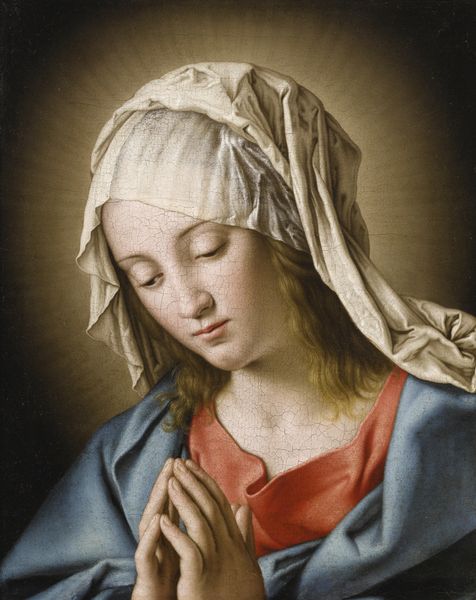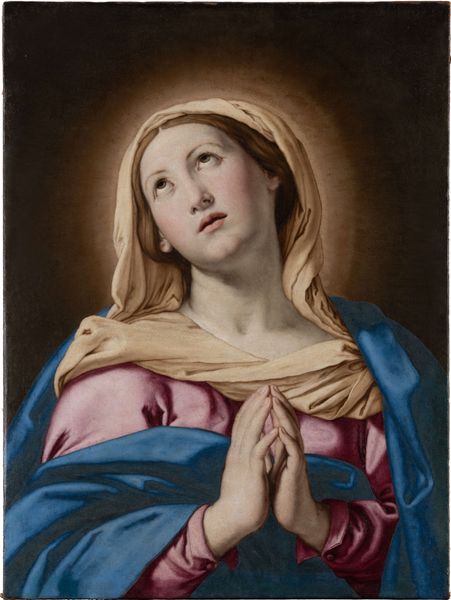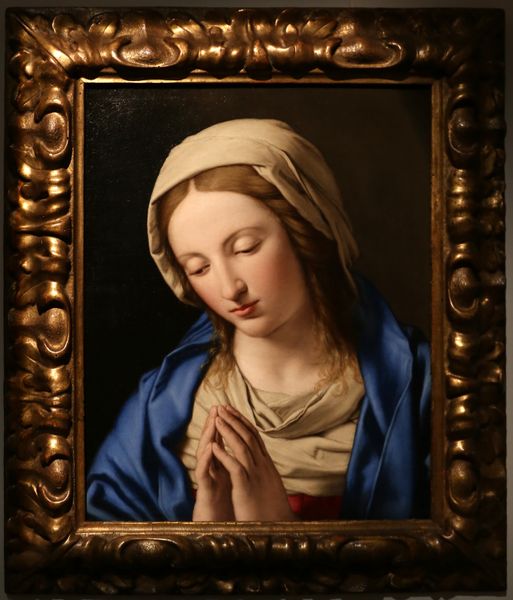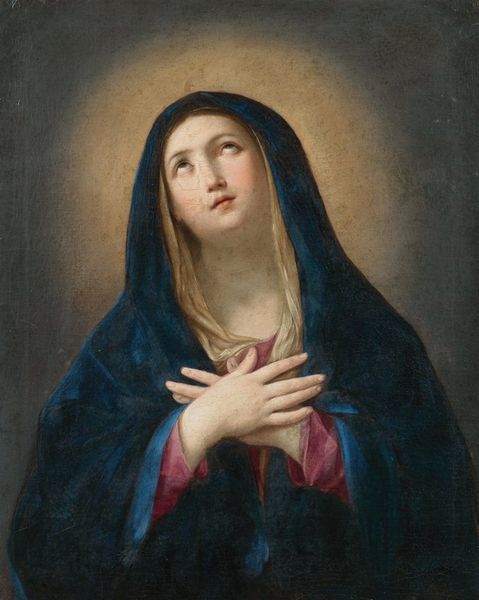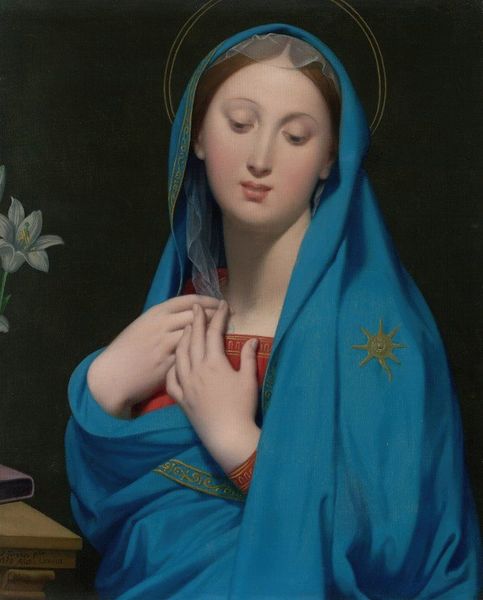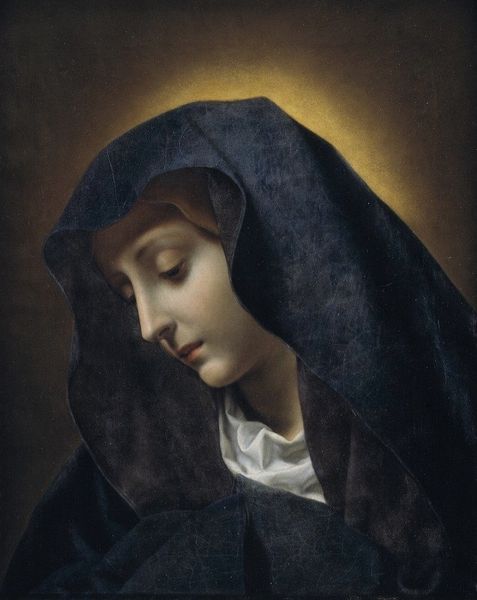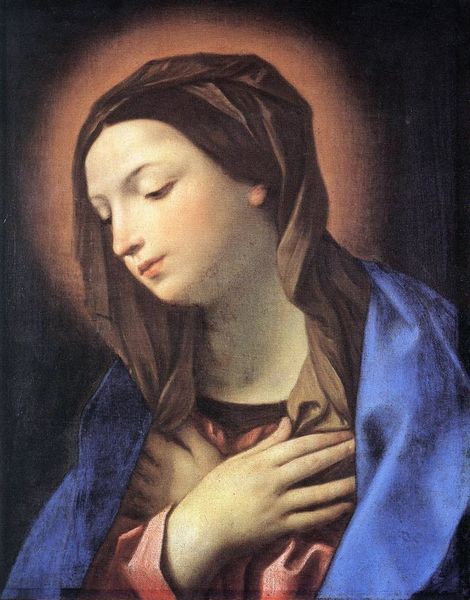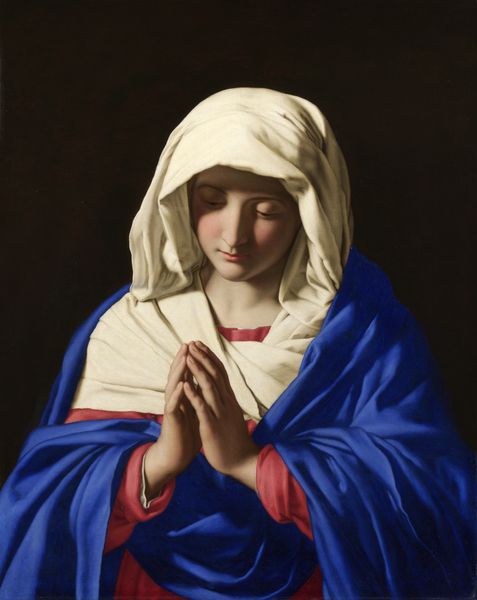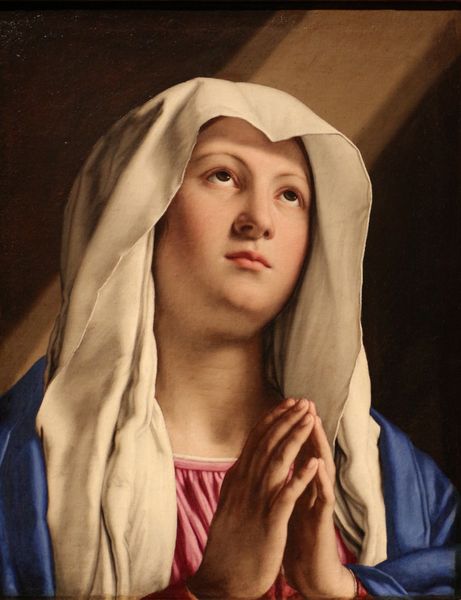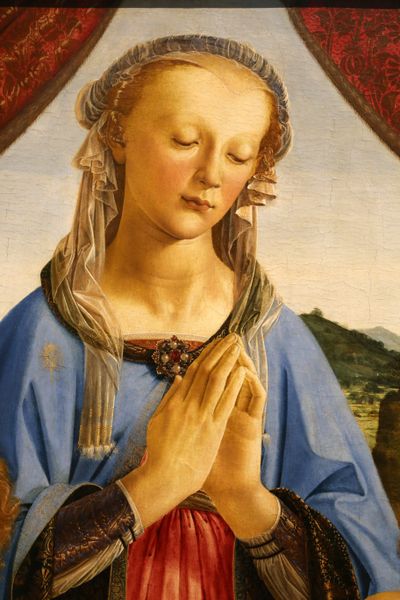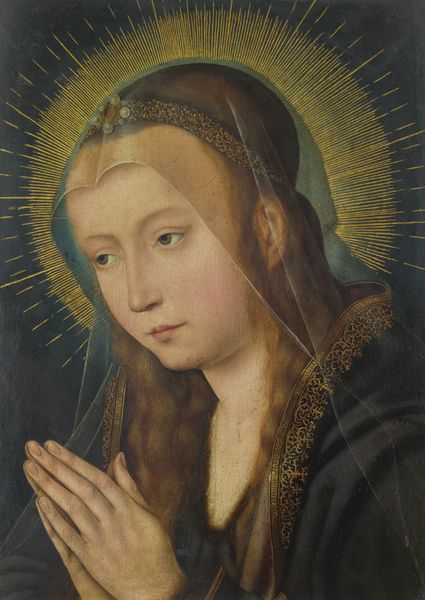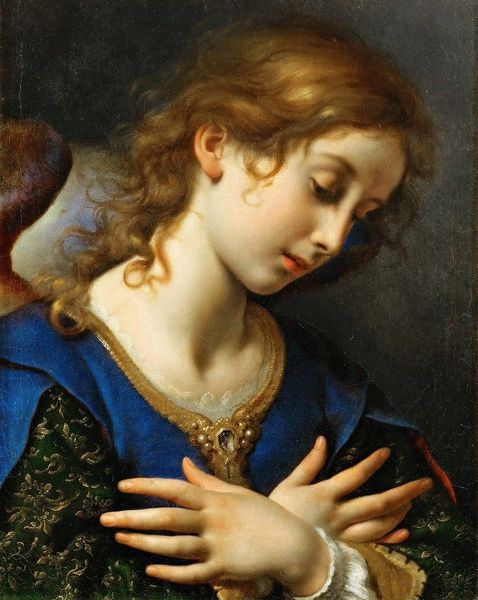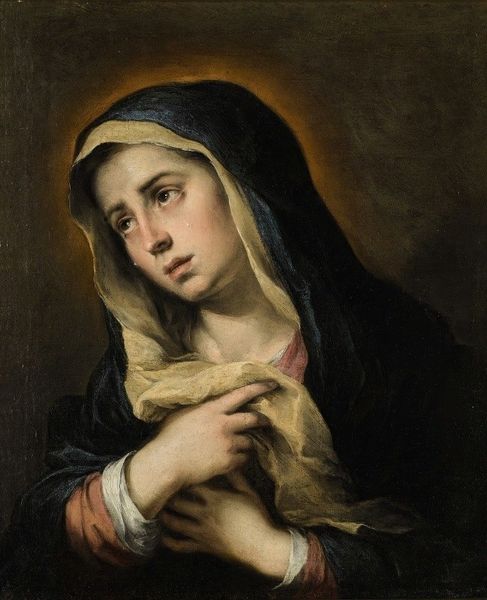
painting, oil-paint
#
portrait
#
baroque
#
painting
#
oil-paint
#
classicism
#
history-painting
#
italian-renaissance
Copyright: Public domain
Curator: Let’s consider Sassoferrato's painting titled "The Madonna". It's an oil-on-canvas portrait exemplifying the Classicist style within the Italian Renaissance. Editor: My first thought is tranquility. The downcast gaze, the soft lighting, it’s all very calming. It feels almost…formulaic in its serenity. Curator: The apparent serenity is indeed carefully constructed. Sassoferrato was deeply influenced by earlier Renaissance masters like Raphael, consciously evoking a sense of idealized beauty that aligned with religious expectations. He provided easily legible icons of piety in post-Reformation Italy. Editor: Precisely. Note the compositional symmetry, the perfect oval of her face. The color palette is restrained – the Virgin’s blue mantle, her fair skin, her light brown hair, set against a dark background. This simplicity focuses our attention on her form, which possesses an almost mathematical elegance. Curator: But that focus on an ideal obscures so much. Sassoferrato consciously stripped away much of the complexity present in earlier Renaissance portrayals. There's a strategic conservatism at play. This Madonna served specific functions, reinforcing religious authority during a period of considerable social upheaval. The deliberate simplicity wasn’t just about aesthetics; it was about control and messaging. Editor: Perhaps. Still, consider the rendering of light on the Virgin's face and hands. Sassoferrato employs a masterful sfumato technique, creating subtle gradations of tone and shadow. The result is an almost palpable sense of life and form. Whatever his motivations, the skill involved cannot be dismissed. Curator: Indeed. It’s undeniable that he mastered the technical aspects of painting to realize this vision of devout purity. The historical context reminds us this wasn’t merely a personal artistic choice, but part of a broader cultural and religious program. Editor: And to understand this program as constructed is crucial to any real appreciation of what we see before us. This awareness changes one's perception of beauty. Curator: Absolutely. The artwork speaks not only through its form but also its function and its reception. Editor: I agree. There's so much more to visual understanding than immediate perception of line, shadow and tone.
Comments
No comments
Be the first to comment and join the conversation on the ultimate creative platform.
